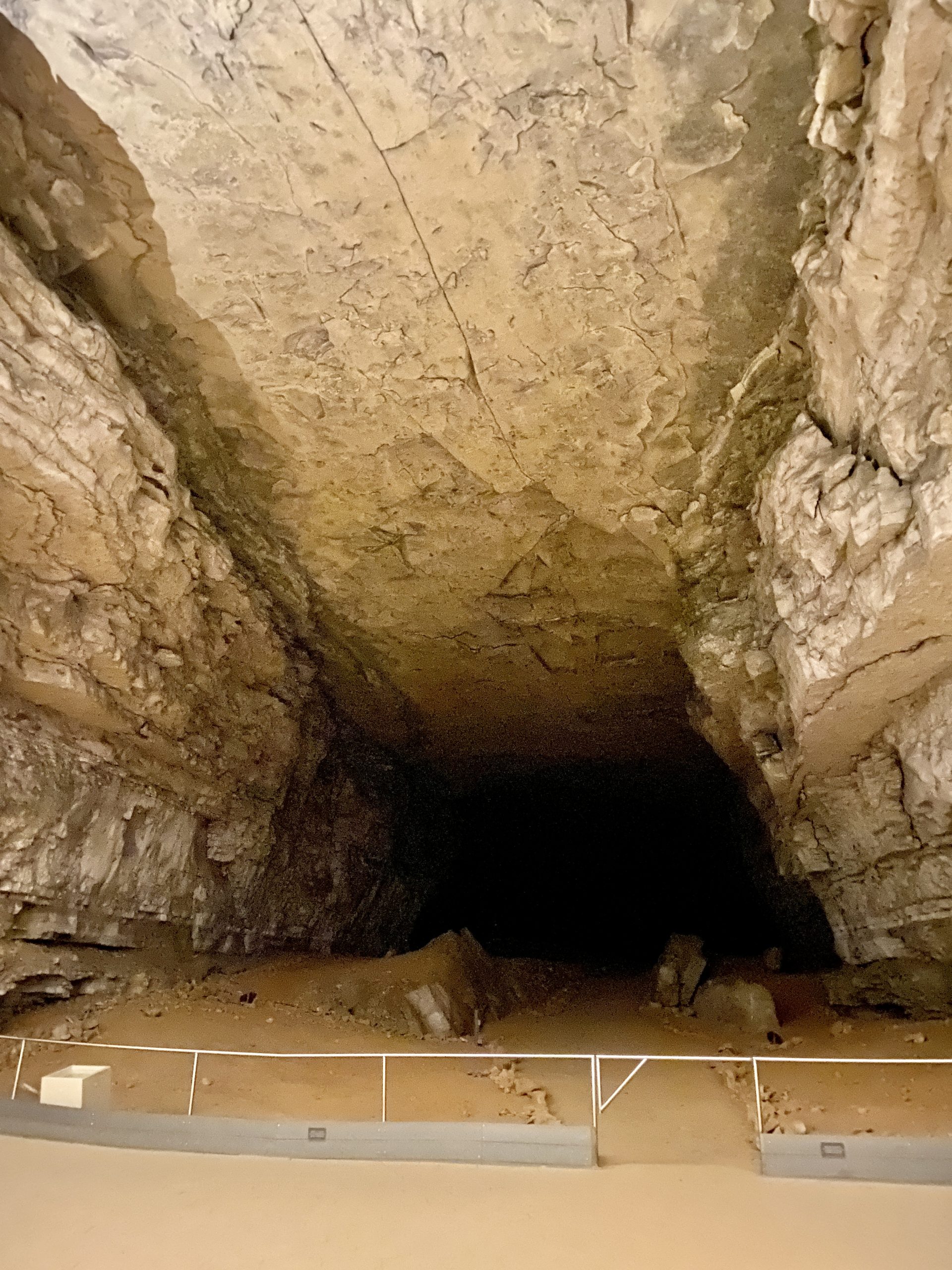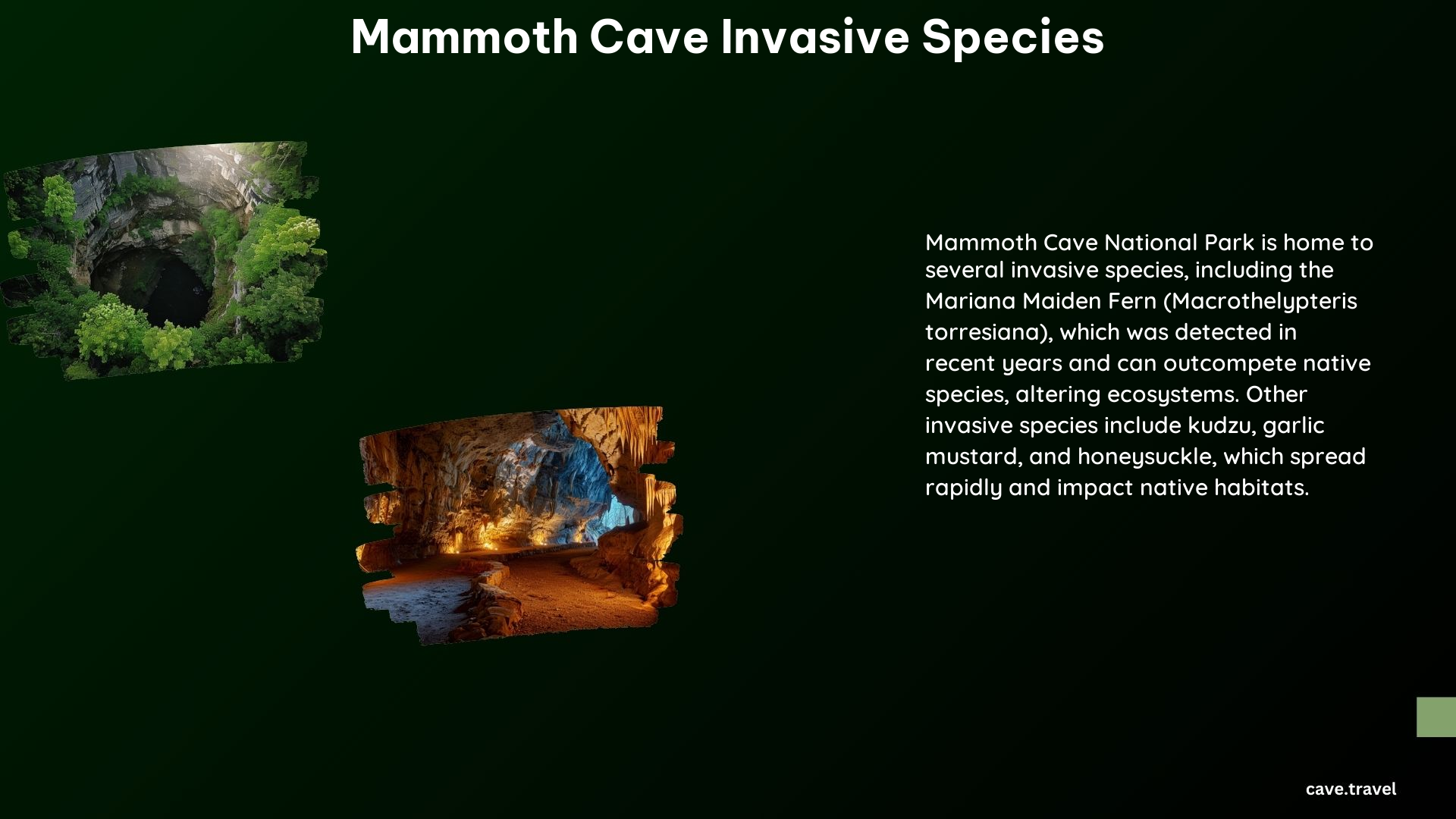Mammoth Cave National Park is a natural wonder, home to a vast underground cave system and a diverse array of flora and fauna. However, the park’s delicate ecosystems face a significant threat from invasive species. These non-native plants and animals can outcompete native species, disrupt the natural balance, and even impact the fragile cave environments. In this blog post, we’ll explore the most problematic invasive species in Mammoth Cave National Park and the efforts to combat them.
Most Problematic Invasive Tree Species

Mammoth Cave National Park is home to several invasive tree species that pose a serious threat to the park’s native vegetation. These species are known for their ability to outcompete and displace native plants, altering the ecosystem’s balance.
Chinese Lespedeza (Lespedeza cuneata)
Chinese lespedeza is a highly invasive tree species that can quickly spread and dominate native plant communities. This species is known for its ability to fix nitrogen, which gives it a competitive advantage over native plants. Chinese lespedeza can form dense thickets, shading out and suppressing the growth of native vegetation.
Garlic Mustard (Alliaria petiolata)
Garlic mustard is another problematic invasive species in Mammoth Cave National Park. This herbaceous plant can rapidly spread and outcompete native plants, disrupting the natural balance of the ecosystem. Garlic mustard is particularly concerning because it can release chemicals that inhibit the growth of other plants, making it difficult for native species to thrive.
Kudzu (Pueraria montana)
Kudzu is a highly aggressive vine that can grow up to one foot per day, making it a significant threat to native vegetation. This invasive species can quickly cover and smother native trees and shrubs, depriving them of sunlight and resources. Kudzu’s rapid growth and ability to spread make it a formidable challenge for park managers.
Treatment of Invasive Tree Stumps

Park crews at Mammoth Cave National Park employ various methods to treat and control the growth of invasive tree stumps. These efforts are crucial to prevent the regrowth of these species and ensure the long-term protection of the park’s native ecosystems.
One common approach is the application of herbicides to the stumps, which can effectively inhibit the growth of new shoots and prevent the tree from regenerating. In some cases, park crews may also opt to physically cut and remove the stumps, eliminating the source of potential regrowth.
Cooperative Project with USDA
Mammoth Cave National Park has partnered with the United States Department of Agriculture (USDA) to combat the threat of invasive species. This cooperative project combines research, monitoring, and control efforts to identify and address the most significant invasive species challenges facing the park.
Through this collaboration, park managers and USDA scientists work together to develop and implement effective strategies for managing invasive species. This includes conducting surveys to map the distribution of invasive plants, testing new control methods, and engaging the public in citizen science initiatives to help track and report invasive species sightings.
Additional Invasive Species Concerns
While the Chinese lespedeza, garlic mustard, and kudzu are among the most problematic invasive tree species in Mammoth Cave National Park, the park also faces threats from other non-native species.
Mariana Maiden Fern (Macrothelypteris torresiana)
The Mariana maiden fern is an invasive fern species that has been detected in the park. This species is known for its ability to outcompete native plants and alter the composition of plant communities. Park managers are closely monitoring the spread of the Mariana maiden fern and implementing control measures to prevent it from becoming a more significant problem.
Citizen Science Efforts
Mammoth Cave National Park actively engages the public in citizen science initiatives to help identify and track the presence of invasive species. Tools like iNaturalist allow visitors to report their observations of non-native plants and animals, providing valuable data to park managers. This collaborative approach helps to improve the understanding of invasive species threats and informs the development of more effective management strategies.
Protecting the unique ecosystems of Mammoth Cave National Park from the impacts of invasive species is a continuous challenge. Through the combined efforts of park staff, researchers, and the public, the park is working to identify and address the most pressing invasive species threats. By implementing targeted control measures and fostering public engagement, Mammoth Cave National Park aims to preserve the delicate balance of its natural environments for generations to come.
References
- https://hartcountyflora.org/invasive-species.html
- https://www.nps.gov/maca/learn/nature/insects.htm
- https://www.us-parks.com/mammoth-cave-national-park/nonnative-species.html
- https://www.nps.gov/maca/learn/nature/non-native-species.htm
- https://www.wcluradio.com/2024/02/28/mammoth-cave-national-park-warns-the-public-about-an-invasive-plant-species/
